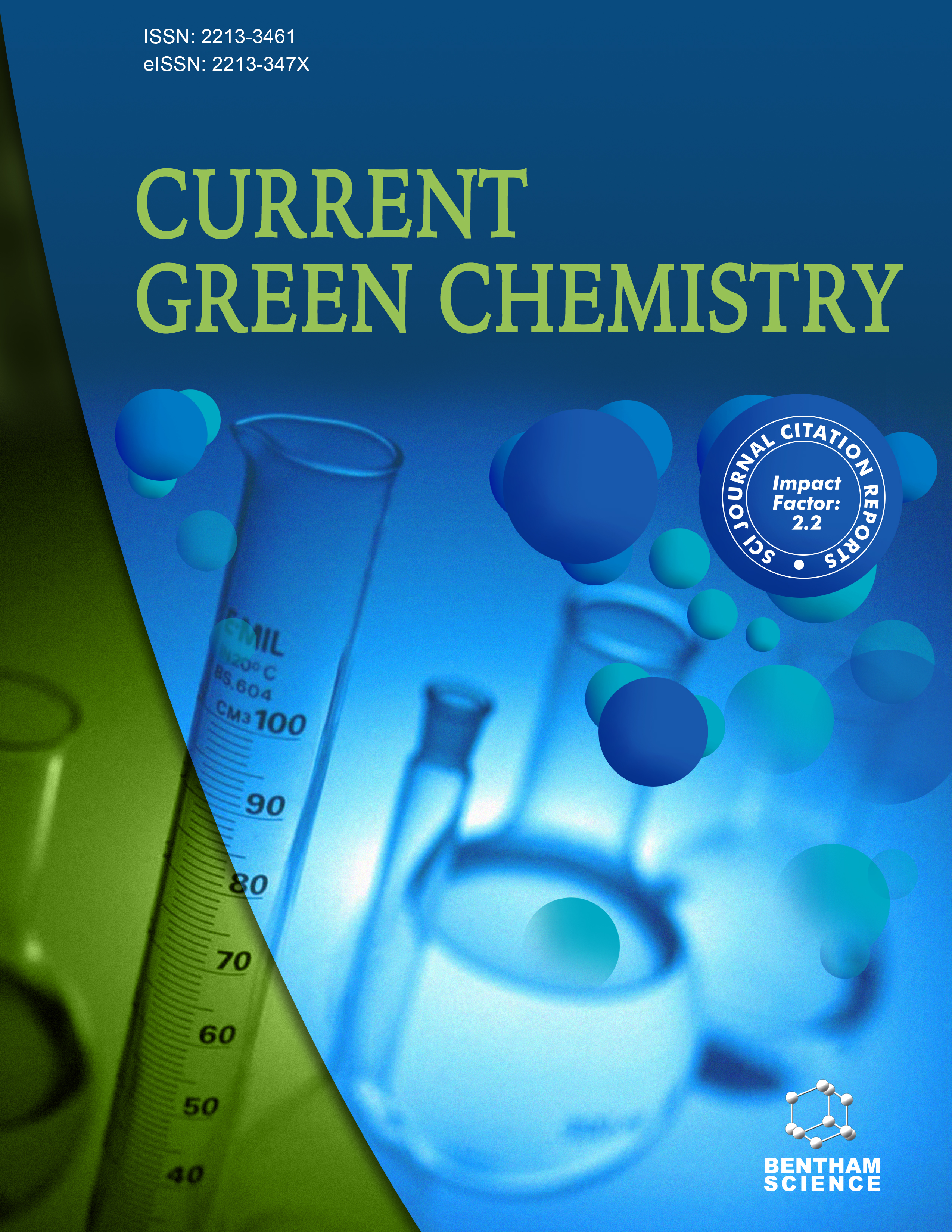- Home
- A-Z Publications
- Current Green Chemistry
- Previous Issues
- Volume 11, Issue 3, 2024
Current Green Chemistry - Volume 11, Issue 3, 2024
Volume 11, Issue 3, 2024
-
-
Eco-friendly Synthesis of Indole Conjugated Chromeno[d]Pyrimidines as Anti-cancer Agents and their Molecular Modelling Studies
More LessAuthors: Venkata Rama Krishnam Raju Datla and Anjali JhaIntroductionMany medicinally active new chemical entities depend on indole conjugated chromeno[d]pyrimidine derivatives as a building block. The synthesis of 4-(1H-indol-3-yl)-3,4-dihydro-1H-chromeno[4,3-d]pyrimidine-2,5-dione 4 were achieved in the current study by treating 4-hydroxy-2H-chromen-2-one 1, indole aldehydes 2, and urea/thiourea 3 in the presence of L-proline.MethodsBy adopting the above protocol, we wer Read More
-
-
-
Vapor-Liquid Equilibrium of System Comprising Green Solvents: A Holistic Review
More LessAuthors: Priyank Khirsariya and Vyomesh M. ParsanaThe design and operation of distillation columns is based on vapor-liquid equilibrium data, which is a necessity for the chemical industry. In recent years, chemical industry has embraced green chemistry and sustainable development. Furthermore, green solvents are more environment-friendly and cleaner than conventional solvents and thus offer a good alternative. Very limited work has been reported in the literature that focu Read More
-
-
-
Present State in the Development of Aerogel and Xerogel and their Applications for Wastewater Treatment: A Review
More LessAuthors: Yaksha Verma, Gaurav Sharma, Amit Kumar, Pooja Dhiman and Florian J. StadlerThis comprehensive analysis investigates the current state of development and emerging applications of aerogels and xerogels in wastewater treatment. Aerogels and xerogels, which are characterized by their distinctive porosity architectures and extraordinary material qualities (low density and high surface area), have received much interest in recent years for their potential to transform the field of wastewater treat Read More
-
-
-
Novel Aspects and Directions in Pest Control and Management - Proteins with Insecticidal Properties
More LessAuthors: Haiyan Zhang, Mohamad Hesam Shahrajabian, Haoran Cui, Yue Kuang and Wenli SunIn addition to the economic losses because of insect pests, a significant part of insect pests can instantly lead to the deterioration and mildew of agricultural products, which all have great hidden hazards to human health. In view of insect pests, the principle means of control and prevention in China is spraying chemical agents. Nevertheless, spraying a large number of chemical factors to control insect pests for a long time will Read More
-
-
-
Eco-friendly Synthesis of Copper Nanoparticles: An Overview of the Epoch-making Role of Natural Resources, Applications, and Recent Developments
More LessAuthors: Sameea Ahmed Khan and Rajesh SharmaGreen synthesized metal nanoparticles offer a broad spectrum of applications. They also offer unmatched significance because they are eco-friendly, cost-effective, and less toxic to human beings. Copper nanoparticles, when synthesized using green protocols, exhibit enriched properties and are substantially used in the preparation of nanofluids, medicine, conductive agents, etc. In this review, we have highlighted how th Read More
-
-
-
Biochar Amendment and its Impacts on Medicinal and Aromatic Plants in Sustainable Agriculture
More LessAuthors: Mohamad Hesam Shahrajabian and Wenli SunIntroductionBiochar application and research have experienced a significant increase in recent decades. It can produce different kinds of organic materials, and it can be employed for different purposes, such as soil conditioning, carbon sequestration and filtration of pollutants from gas and aqueous media. Biochar is a C-rich material, which can be obtained from different types of organic feedstock, such as animal manure, s Read More
-
Most Read This Month
Article
content/journals/cgc
Journal
10
5
false
en


